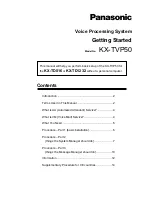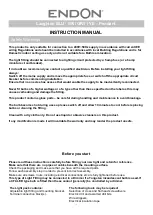
3
Features
R
Features
3-101
Conditions
• This feature does not apply to DIL 1:1 calls.
• If delayed, no ringing or no incoming call (disable) is assigned to an
extension, the extension can answer an incoming call during no ring or
the delay time by pressing the flashing button.
Programming References
Section 4, System Programming,
[603]–[604] DIL 1:N Extension and Delayed Ringing — Day / Night
Feature References
Section 3, Features,
Direct In Lines (DIL)
Operation References
Not applicable.
R
inging, Discriminating
Description
Allows the extension user to identify the incoming call by the
ringing pattern. (See Section 5.1 “Tone / Ring Tone.”)
Conditions
• When there are multiple incoming calls and the extension goes from
off-hook to on-hook, the calls are rung according to the following
priority:
<1> Consultation Hold Recall
<2> An incoming call from a line in which the Prime Line
Preference – Incoming function has been set (with a
proprietary telephone only)
<3> Call Waiting
<4> Incoming calls; Hold Recall; Transfer Recall; Unattended
Conference Recall
• If multiple incoming calls arrive at an on-hook extension
simultaneously, priority as to which calls should be rung is generally on
a “first-come first-served” basis. In the case of digital proprietary
telephones (DPT), however, when the Prime Line Preference –
Incoming function has been set, this line takes precedence.
• Incoming TAFAS calls can be identified by ringing signals sent out
from external pagers. The ringing pattern is the same as the outside calls.
• The DPT user can select a desired tone frequency for each CO button.
Programming References
No programming required.
Feature References
Section 3, Features,
Ringing Tone Selection for CO Buttons
Operation References
Not applicable.
















































